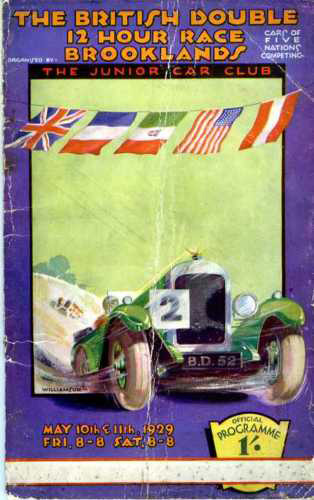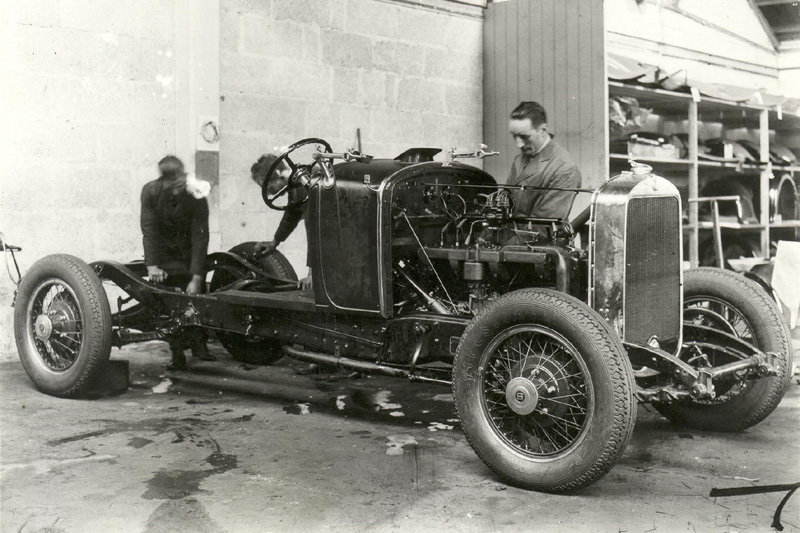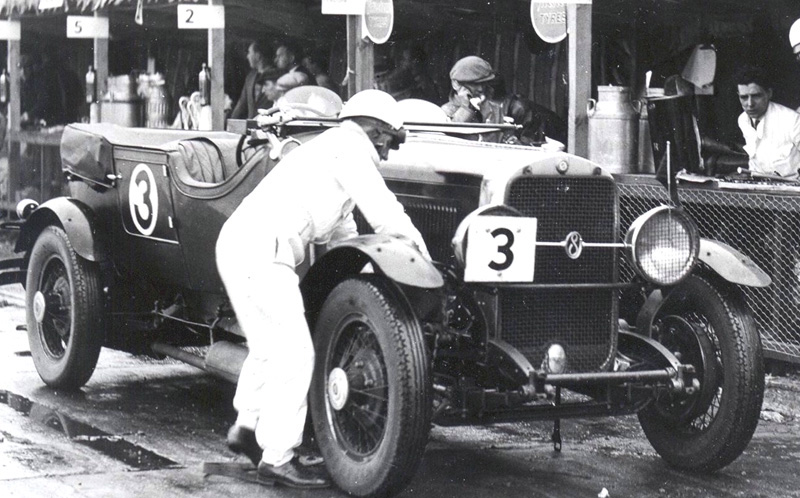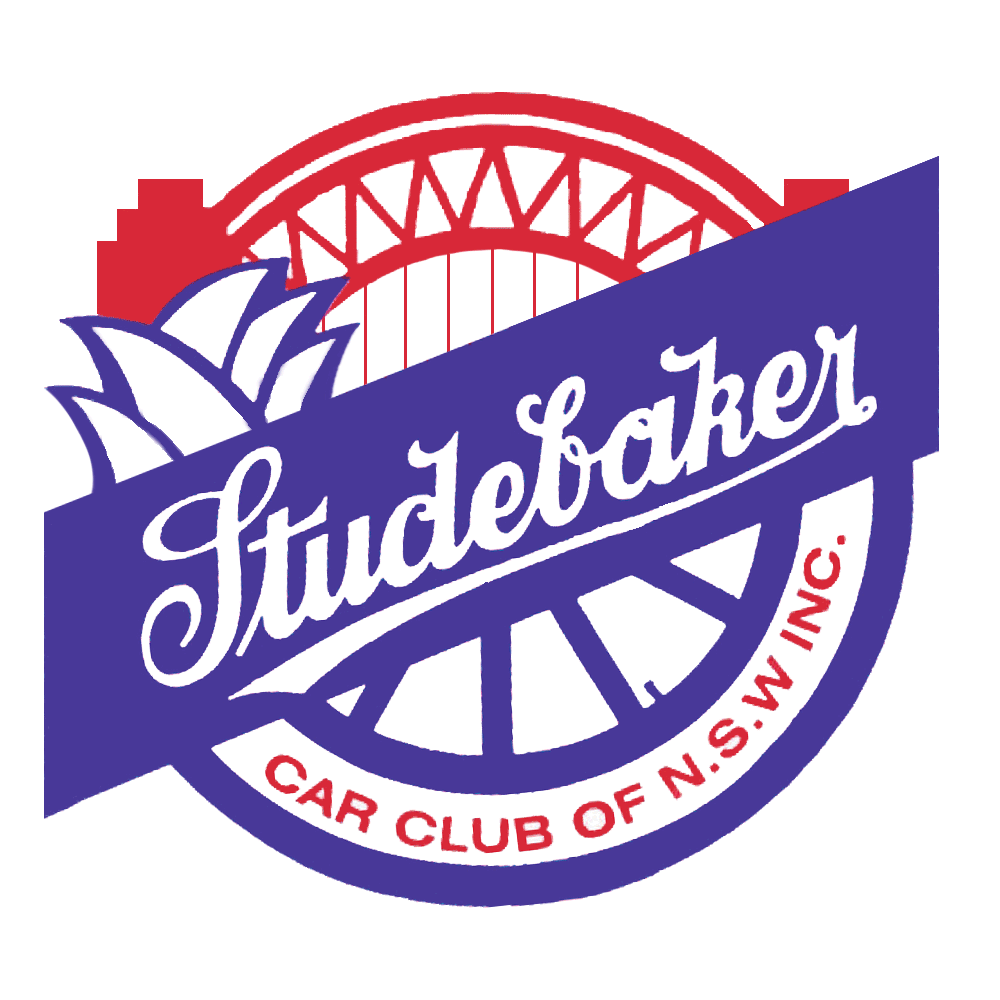|
Background of this Vehicle,
and the British Double 12 Hour Race.
What is a Studebaker Brooklands Sports Tourer you might ask?
They are
Studebaker President Eights with English Sports Tourer Fabric Bodies and
cycle type mudguards.
These were imported into England as standard Roadster
Chassis’s complete with bonnet, scuttle folding windscreen and headlights. The standard exhaust was replaced with a Brooklands exhaust and
the
hydraulic shock absorbers were set to the firm setting, the sixteen imperial
gallon fuel tank was replaced with a thirty gallon fuel tank, a radiator
mesh and headlight meshes were added. The fuel tank apron, front dumb iron
apron running boards and valances along with the front bumper bar was
discarded, an attractive four passenger fabric sports tourer body was fitted
with cycle guards. The end result was a very sporty tourer with folding
windscreen and Brooklands aero screens, looking not unlike a Lemans Bentley
from some angles. The wheel base is 125” the straight eight side valve
engine is 5.5 litres ( 337 CI) 115 HP, rear axle ratio is 3.47-1 wheels are
wire fitted with 600x20” tyres.
These cars were capable in excess of 90 mph (144 kph) and averaged 71 mph
(113 KPH) for 24 hours during the race, and two similar cars were privately entered in the 1929 Brooklands
Double Twelve.
Who raced these anglicised Studebakers?
The drivers and mechanics names were;
A. Hollidgen, J. Laird, C. Johnstone and A. Walter.
As the drivers were
amateurs one presumes the cars were not members of a factory backed team.
How did they fair?
First and second place in Class B (five to eight litre
class), but due to their unfavorable handicap their position in the race
was ninth and nineteenth. Unfortunately, large cars already handicapped to a
formula and as well had to carry weights to compensate for two extra
passengers. In fact, car No. 4, driven by J. Laird came 4th outright behind a
Factory Team 4 1/2 litre Bentley driven by S.C.H. Davis and Ronald Gunter
and two factory team supercharged Alfas driven by G. Ramponi and B. Ivanowski.
To give you some idea of the reliability of the Studies, two were entered
and two finished. Five Bentley's were entered and two finished of five Alfas
three finished and of two Bugattis entered none finished.
How did they perform?
Very silently, even with Brooklands exhaust. The two
cars usually together handled particularly well frequently lapping in excess
of 70 mph (112 kph) problems were only minor consisting of flat tyre a
throttle pin and Shock absorber bracket coming adrift and the ignition
timing slipping. The white overalls of the crews were the cleanest of any at
the finish of the race.
Just how many Brooklands Sports Tourers were produced?
I don’t know but they
were available to the public for seven hundred and ninety five pounds,
obviously at least two were produced. I have photos of two cars, maybe
three, unless one had modifications made. I have tried to find more
information on these unusual Britianised Studebakers but to no avail. I
would appreciate if anyone can help with information on either the cars or
the crews or anything else pertaining to these cars.
The Studebaker Brooklands Sports Tourers were raced in the 1929 Brooklands
Double Twelve, a 24 hour race run during daylight hours over two consecutive
days because of noise restrictions at Brooklands.
 The
inaugural Brooklands Motoring Festival, The Double Twelve, was a resounding
success with almost 15,000 visitors attending over the weekend. The
inaugural Brooklands Motoring Festival, The Double Twelve, was a resounding
success with almost 15,000 visitors attending over the weekend.
The Brooklands Double Twelve, first run May 10~12 1929, was the Junior Car
Club's (JCC) imaginative solution to the problem of running a 24-hour race
at Brooklands.
Overnight racing had been banned at Brooklands shortly after the course
opened in 1907 when SF Edge drove non-stop for 24 hours, setting a world
record but earning the wrath of local residents.
In the Double Twelve, cars ran for two 12-hour stints from 8am to 8pm and
were locked away overnight in secure garages so they could not be worked on
during the resting period.
The JCC’s Members’ Rally in the 1930s featured complex driving tests laid
out on various parts of the Brooklands circuit, and also included a
half-mile high-speed run on the banking against a target time. Almost 150
cars, driven by a mix of notable Brooklands drivers and amateurs, took part
in the last one in 1939.
|

One of the original chassis to be
modified. |

Car number 3 in the pits. |
The years of 1928 – 1929 were good ones for Studebaker. In July, 1928 four
fully equipped President Eights averaged better than 68 mph (108 kph) for 19
days and 18 nights at the Atlantic City Speedway and in November 1928 also
at Atlantic City two stock President Roadsters averaged in excess of 85 mph
(136 kph) for 24 hours under strict A.A.A. Supervision. In May of 1929 two
President Sports Tourers won their class in the Brooklands 12.12. and at
Pikes Peak in September, 1929 a President Eight driven by Glen Shultz zoomed
up the mountain at an average speed of 34.4 mph (54 kph) in a record 21
minutes 43.4 seconds winning the Penrose Trophy.
On to
my 'Brookands' replica;
I knew
nothing of the 12/12 Studebakers until the 1970s during the time I was
restoring my 1935 Studebaker
Commander Eight Roadster, and I bought a book from
Greens Motorcade of Cars about Studebakers. This book consisted of reprints
of Auto Car and Motor. On Page 67 there is an ad with a picture of a 1929 Brooklands President, winner of Class B in the 1929 British Double 12. The
caption read "Studebaker now holds more world and international Class B
records than any other manufacturer".
I would often look at that photo and think what a fantastic car and wouldn't
it be wonderful to own one, but of course none of these cars have survived,
not that I could afford one if they did.
Many years later still drooling over the photo, a crazy idea came to mind.
Why not buy a 1929 President and build one. Surely it can't by that hard!
I soon learned different. First of all, I could not find a suitable donor
car. When I asked around I was told there isn't any, except in Cooma and
they are definitely not for sale,
I read the Sydney Morning Herald with anticipation every Saturday and
advertised in "Restored Cars" etc. One Saturday there was a 1936 President
advertised with an S.T.D. phone number. As I was still restoring the thirty
five Studebaker Commander 8, I thought that this may also be a thirty five,
as people do not always know exact models. When I rang I was assured that it
was in fact a thirty six model. It turned out I had rang the person in Cooma
with all the twenty nine Presidents. I asked him whether he would sell one
and he indicated that he would, but only after he had sorted out which car
parts he would part with. After several months of fortnightly phone calls
and winter approaching fast, I phoned him and said I would go to Cooma to
see his cars. He phoned back within 20 minutes and said he wanted to sell
the lot. I went to Cooma and parted with some money and ended up with 2
basket case twenty nine President 8 Roadsters and a twenty nine Commander 8
Roadster chopped into a ute. Loading them on to a semi and getting them home
is another story.
The good news was that being Roadsters I had the correct cowl and folding
windscreen plus the high ratio 3.46-1 differential. I still had the thirty
five to finish and was about to go to Europe so the 12/12 project was
shelved for 2 years, except for research. Whilst in England, I purchased
several 10 x 8 photos of Brooklands Studebakers from the library at Beaulieu.
Two years later, with the help of these photos, I made a full size shape
pattern including the hood bows from 10mm x 3 mm flat steel manipulating it
until I got it right. I then constructed the frame and then covered it in
aluminium, only needing some help with the blocking and wheeling the rear
quarter panels.
Once the body was built I removed all the mechanicals from the chassis and
had it sand blasted. I then primed it and sat the body back on the chassis.
I dismantled the engine had it bored (one new sleeve) bearings re-metalled,
new pistons, rings, valves etc.
The project was then put on hold for another 6 years whilst I sold the
family business, started a new career and did some work around the house.
In 1995 I was back on the job with a vengeance. The chassis was painted in a
dark red two pack. I bolted the body to the chassis, fitted the doors,
fitted the reconditioned back axle, springs etc. The engine was assembled
and I fitted the engine by lowering the chassis over it. The gear box and
tail shaft reconditioned and fitted. I had new brake drums made, 5 new
wheels, new windscreen frame and new cycle guards. I made the hood frame
which took countless hours as did the mudguard, headlight and taillight and
step tread brackets.
To get the car to the correct height to make the mudguard brackets I drilled
my garage floor at each corner of the car and screwed 1/2” threaded rod into
'Loxin' masonry anchors in the floor and a bracket bolted to each comer of the chassis. Then
screwing the car down to the desired height. Once the car was completed and
driven, I removed the springs and had them tempered and reset to the correct
height.
I made a new aluminium dashboard, scrounged around for suitable instruments
and had them reconditioned and made the steering wheel from a piece of marine
grade aluminium plate then had the wood rim made.
I made and bound the wiring loom myself using good quality heavy gauge
Australian cable including flashers and stop lights.
I was able to acquire a pair of English bucket seats and modify them to suit
the car. For the rear seat I made a plywood base and back to which the
trimmer fixed the springs and padding. The hood frame and all the numerous
other items were sent to Albury to be copper plated and chromed. Much time
and money was spent on the radiator shell. The radiator badge went to
Victoria to be enameled.
I varnished the hood bows, riveted the frame together and fixed it to the
car for the umpteenth time.
The car was winched onto a tilt-tray truck and sent to the trimmer where
the interior was upholstered in leather. The body was covered in black vinyl
and the hood and tonneau covers were made.
November 2000 the car returned home where I removed the upholstery hood etc.
sprayed the black vinyl covering with matching dark red vinyl paint, fitted
the cover strips and refitted the upholstery. At this stage, I was spending
every spare moment on the project and there were still lots to do. The cycle
guards all the brackets etc. were painted in two pack red. I fitted all
these items to the car plus the radiator, bonnet, headlights, taillight
flasher lights and numerous other bits and pieces. This was exciting stuff
as every piece I fitted was on to stay and by December the car looked
complete.
The whole of 2001 was spent making and fitting accelerator linkages, brake
rods, fuel tank, fuel lines, more cover strips kick plates completing the
wiring, connecting lights and a 1,001 other bits and pieces; all those 10
minute jobs that take an hour each.
One of the highlights of the year was starting the engine, but with every
high there is a low. The next couple of weeks were spent stopping all the
oil and water leaks.
Then the big day came in December when I took the car out to get it
registered.
Christmas came and went and it was now January. The springs had settled
down. Now was the time to remove them and have them tempered and reset. This
turned out to be a hit and miss affair. The rear springs taking two goes to
get right.
Before we knew it, it was February. Time for it's first official outing to
the VSCCA Opening Rally at North Head. We had an uneventful run to North
Head and back except for some light rain on the way.
John Grant
Click
>here< to go to page 1.
|
